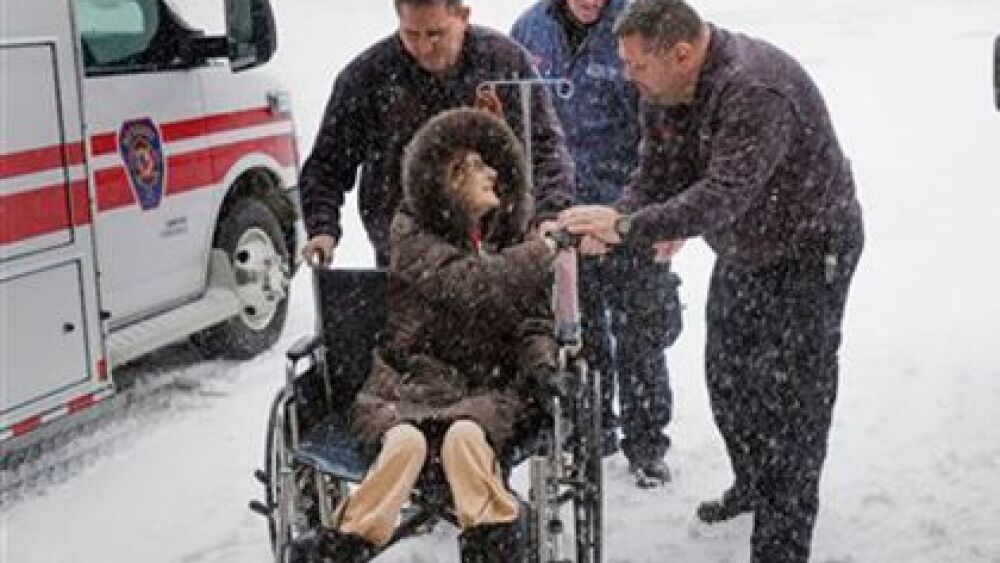Cold weather is upon us, and so is the risk of hypothermia in our environmentally exposed patients. When body temperatures drop, so should our sole reliance on capnography to drive our ventilation rates.
“EtCO2 monitoring does not seem to be a reliable guide to ventilation parameters in severe hypothermia.” That was a conclusion of a with signs of circulatory shock.
Before we stop relying on capnography to determine ventilation rates in all hypothermic patients, let’s take a step back and remember that this study focused on severely hypothermic patients, and the patient sample set from this study was a small overall number. Granted, severe hypothermia is still a relatively low-occurrence event to begin with.
Nevertheless, let’s explore hypothermia and capnography.
Temperature concerns
As body temperature drops, so does oxygen intake (diffusion). Heart rate decreases; blood pressure eventually will, too. Bradycardias can develop, along with J-waves (Osborn waves) and the QTc-interval can become prolonged. Everything slows down, even down to zero. Chaos (ventricular tachycardia/fibrillation) could even erupt.
As the respiratory rate decreases, we often associate this with increased CO2 retention – hypercapnia. This often indicates the need to ventilate the patient more often (which does not necessarily mean to hyperventilate ... it just means to do it more often than what is actively happening).
Keeping this research conclusion in mind, hypothermia situations (be it mild, moderate or severe) are often non-definable in the prehospital setting, so all we can really do is “something,” which typically means to manage the patient’s ABCs as best as possible, and passively warm them.
Sitting here typing this article, I’m in my comfy living room, but outside, it’s –5 degrees Fahrenheit with wind chills dipping the temperature to around –35 (of note, I live in Wisconsin, so this is expected during the winter – and I love it!). At any rate, I can recall responding to slips and falls to patients outside as they were shoveling, walking to the mailbox, or even walking their dogs.
Now, it may not be a life-threatening emergency simply because of a slip-and-fall – at least not if the patient is alert and all we’re dealing with is a simple traumatic event – but when the temperatures dip this low, the temperature concerns surrounding these situations heightened my concern a bit. Reflecting on these events, it wasn’t the acute or recent slip-and-fall that was of emergent concern, but the prior slip-and-fall that caused greater concern, especially when the patient had been lying on a cold concrete floor in their garage, finally found after hours – or even days – of yelling for help.
Patients able to yell for help are likely more in the mild-to-moderate stages of hypothermia, as opposed to the severe stage, but the reality of being cold for so long could still take its toll, especially when there are other comorbidities to consider.
What if this alert patient’s EtCO2 reading is 20 mmHg? What if their blood pressure is “normal” (126/76), and their respiratory rate is around 20 breaths per minute? Does this change anything within this scenario?
While it may not indicate a need to directly intervene regarding their respiratory drive, it may indicate an issue surrounding sepsis, another culprit of metabolically-low end-tidal carbon dioxide readings. This patient’s axillary temperature of 96.2 degrees may also manifest itself because of sepsis or the cold environment.
Differential diagnosis
Here’s where paramedicine gets interesting, even fun; determining a differential diagnosis. Is this patient “simply” hypothermic, or are they septic or are they both? Which came first, the chicken or the egg, and/or, does it really matter?
Will treating both lead you astray or will it show that you’re an expert within your paramedical domain? (I side toward the latter).
Utilize capnography in the cold as a tool to identify both respiratory problems and metabolic problems, and then treat patients accordingly – even perhaps with an equal level of concern. In both of these situations, low-flow oxygen, IV access with warm fluid administration, and external (passive) warming could benefit both differential diagnoses for this patient.
If the scenario was changed a little bit and this cold-to-the-touch patient was experiencing cardiac arrest, the presence of an ECG rhythm should guide you to “work” rather than to “call it,” keeping in mind that the patient’s EtCO2 may now be all over the place (high because of retained carbon dioxide, low because of hypoperfusion, low because of hypothermia or “normal” just because the body doesn’t know what the heck it’s doing at all). At any rate, this would be a perfect example of a situation where you need to treat the patient, not the monitor.
Being in the cold can complicate any number of situations, even skewing your equipment’s results altogether. In any situation where the utilization of waveform capnography for patient assessment is indicated (which is just about any or every medical situation, period) always keep the patient’s context in mind as you determine how to treat them. Hypothermia, hypoperfusion, hyperventilation or any other situation where your patient’s EtCO2 values might be low, put aside, should lead you to always consider your patient’s environment and the context behind how you believe they got to their present condition. Not considering differentials besides the obvious may, after all, leave you out in the cold.
Move with purpose to prevent an apparatus crash, slip or fall, and protect the patient from increased discomfort













